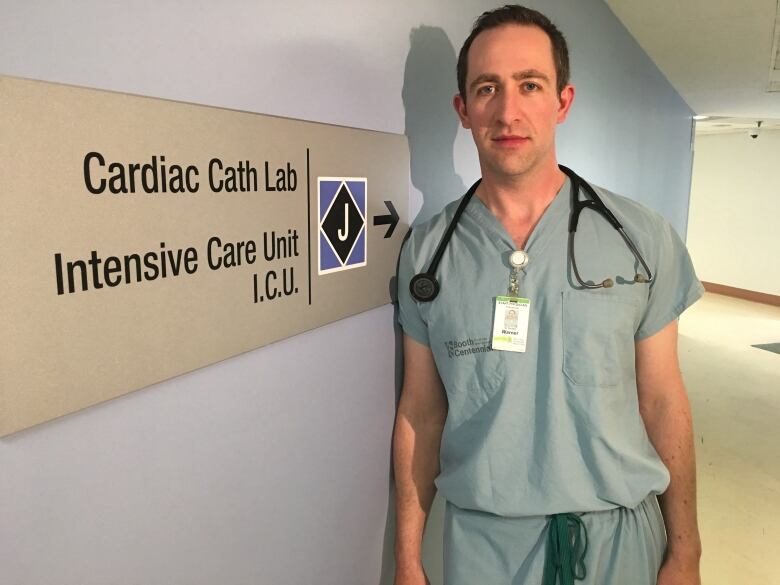With COVID-19 'spreading aggressively,' Toronto and Peel face uncertain future after lockdown
Situation 'very serious,' but it's too soon to know if extended lockdown needed, top doctor says

As Toronto and Peel Region pass the midway point of theirlockdown, indicators measuring the severity of the COVID-19 pandemic are not yet showing any sign of improvement, raising the spectre ofprolonged or heightened restrictions stretchinginto the foreseeable future.
The two regions were placed under Ontario's "grey" lockdown restrictions by the provincial government for a period of at least 28 days that could end as soon as Dec. 21.
The heightened public health measures include the closure of in-person restaurant service, gyms, and a ban on indoor social gatherings among people from different households.
In the two weeks since those measures were installed, case counts and hospitalizations in Toronto and Peel Region have continued their steady climb, to the dismay of public health officials.
"The case counts are so high that I can only call this a very serious situation," said Toronto's Medical Officer of Health Dr. Eileen de Villa during a Monday news conference.
"COVID-19 is spreading aggressively in Toronto."
Dr. Michael Warner, the medical director of Michael Garron Hospital's intensive care unit, said there has been a "significant increase" in COVID-19 admissions during the past week, which has left the hospital with more patients than beds.
"That trajectory is concerning," said Warner, who expects COVID-19 ICU admissions to continue surging until at least the end of the year, which could result in massive strain on the health-care system and its workers.
The number of COVID-19 patients in ICUs across Ontario reached a second-wave high of 213 on Monday.
University of Ottawa epidemiologist Raywat Deonadan likened the situation in Toronto and Peel Region to that of a massive truck, whose momentum will be difficult, though not impossible, to counteract.
"We have a huge caseload," he said. "It's going to take a while to slow that down," he added before noting that former hotspot regions like Ottawa have had comparative success.
Why this week is key
The onset of COVID-19 symptoms can take up to 14 days after a person's initial infection, meaning that case numbers collected this week by Toronto and Peel Region could offer the most accurate measure yet of the lockdown's effectiveness.
De Villa said she and her team will be examining a variety of indicators this week including the ages of new patients, where new cases are found and the number of hospitalizations to determine the city's next steps.
She said it is too soon to know if existing lockdown restrictions will need to be extended beyond Dec. 21.

Deonadan said appropriate next steps may not be clear until nearly the end of the current lockdown, since measures to slow the virus during the pandemic's first wave took up to four weeks.
"It flattened eventually, but it took longer than we thought," he said.
Warner also cautioned that any impact on hospitalizations will be "dramatically delayed" from the time new restrictions are put in place.
Decisions about those restrictions will ultimately be determined by the province, which has not yet said what it'splanningfor Toronto or Peel Region at the end of the current 28-day period.
Premier Doug Ford on Monday credited the lockdowns for keeping the rate of growth below a figure presented in provincial modelling data in November, which forecasted that Ontario could see more than 6,000 daily cases by mid-December if no interventions were taken.
"So I sat back and thought, if we didn't do this lockdown would it have been 6,000?" Ford said.

Calls for regional lockdown,renewed commitment
Warner said this week's updated COVID-19 figures could still mask the true spread of the novel coronavirus, since not all regions in the GTA are subject to the same restrictions. That means people may be contracting the virus as they move around the region, where some businesses and personal services remain open.
"It's hard to know whether the lockdown measures will be effective because it's not a regional lockdown," he told CBC Toronto.
"It's just two municipalities within the Greater Toronto Area that are in lockdown, and people continue to move freely."
He's calling for expanding lockdown restrictions across the GTA.
De Villa said a region-wide lockdown is worth considering if the current struggles continue, though she said residents accepting their responsibility to stay home and limit contacts will ultimately determine the course of the pandemic.
"What happens," she said, "is really up to us."












_(720p).jpg)


 OFFICIAL HD MUSIC VIDEO.jpg)
.jpg)



























































































